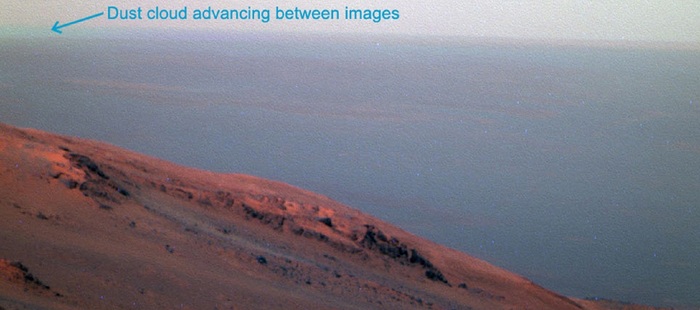A new study published in GeoHealth warns that toxic dust on Mars would pose a serious health risk to astronauts on a possible future mission. Substances in the Martian dust, including silica, gypsum, perchlorates and iron oxides, could cause serious respiratory problems and diseases such as pulmonary fibrosis and aplastic anemia. In addition to human health risks, Martian dust constantly coats every surface and could impair the operation of vehicles, solar panels and scientific instruments.
“As the authors pointed out, dust really does get everywhere and behaves a little differently from dust on Earth. On our planet, most of the dust and particles are carried lightly as they move around and tend to be quite rounded when you look at them under a microscope.” In comparison, on the Moon and Mars, you’re dealing with very sharp and pointed particles that “tend to be heavier and more invasive,” they explain.
Justin Wang, co-author of the study and a medical student at the Keck School of Medicine at the University of Southern California (USC) told the media that: “The biggest danger is the risk to the astronauts’ lungs. Because the dust is so fine, it is expected to remain in the astronauts’ lungs and some of it will be absorbed into the bloodstream.” The expert further adds, “Astronauts are already at risk of pulmonary fibrosis due to radiation exposure in space flight, and many of the hazards, including silica and iron oxides, can cause lung disease.”
Study co-author Brian Hynek, professor of geological sciences at the University of Boulder, pointed out what the broader negative impacts of Martian dust might be in the context of a space mission. He explained that red dust “constantly falls from the sky and covers everything. Intense storms occur within a few years that affect the Martian globe and are deposited, forming a thick layer.” Violent dust storms on Mars, which quickly covered an area larger than the United States, were captured, for example, by NASA’s Mars Reconnaissance Orbiter (Mro) probe in 2017. Human exposure to this mixture of substances that form Martian dust could be compared to exposure to asbestos, a fibrous mineral that was used in building materials until research found that it caused lung cancer, mesothelioma and heart disease, according to the study authors.











